Hyperactivity of Rac1-GTPase pathway impairs neuritogenesis of cortical neurons by altering actin dynamics
- PMID: 29740022
- PMCID: PMC5940682
- DOI: 10.1038/s41598-018-25354-3
Hyperactivity of Rac1-GTPase pathway impairs neuritogenesis of cortical neurons by altering actin dynamics
Abstract
The small-GTPase Rac1 is a key molecular regulator linking extracellular signals to actin cytoskeleton dynamics. Loss-of-function mutations in RAC1 and other genes of the Rac signaling pathway have been implicated in the pathogenesis of Intellectual Disability (ID). The Rac1 activity is negatively controlled by GAP proteins, however the effect of Rac1 hyperactivity on neuronal networking in vivo has been poorly studied. ArhGAP15 is a Rac-specific negative regulator, expressed in the main subtypes of pyramidal cortical neurons. In the absence of ArhGAP15, cortical pyramidal neurons show defective neuritogenesis, delayed axonal elongation, reduced dendritic branching, both in vitro and in vivo. These phenotypes are associated with altered actin dynamics at the growth cone due to increased activity of the PAK-LIMK pathway and hyperphosphorylation of ADF/cofilin. These results can be explained by shootin1 hypo-phosphorylation and uncoupling with the adhesion system. Functionally, ArhGAP15-/- mice exhibit decreased synaptic density, altered electroencephalographic rhythms and cognitive deficits. These data suggest that both hypo- and hyperactivation of the Rac pathway due to mutations in Rac1 regulators can result in conditions of ID, and that a tight regulation of Rac1 activity is required to attain the full complexity of the cortical networks.
Conflict of interest statement
The authors declare no competing interests.
Figures
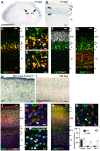

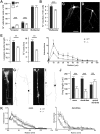

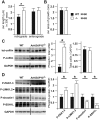
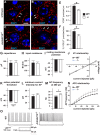
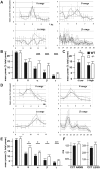
Similar articles
-
Disruption of ArhGAP15 results in hyperactive Rac1, affects the architecture and function of hippocampal inhibitory neurons and causes cognitive deficits.Sci Rep. 2016 Oct 7;6:34877. doi: 10.1038/srep34877. Sci Rep. 2016. PMID: 27713499 Free PMC article.
-
The atypical guanine nucleotide exchange factor Dock4 regulates neurite differentiation through modulation of Rac1 GTPase and actin dynamics.J Biol Chem. 2013 Jul 5;288(27):20034-45. doi: 10.1074/jbc.M113.458612. Epub 2013 May 17. J Biol Chem. 2013. PMID: 23720743 Free PMC article.
-
The NAV2 homolog Sickie regulates F-actin-mediated axonal growth in Drosophila mushroom body neurons via the non-canonical Rac-Cofilin pathway.Development. 2014 Dec;141(24):4716-28. doi: 10.1242/dev.113308. Epub 2014 Nov 19. Development. 2014. PMID: 25411210
-
The cellular function of srGAP3 and its role in neuronal morphogenesis.Mech Dev. 2013 Jun-Aug;130(6-8):391-5. doi: 10.1016/j.mod.2012.10.005. Epub 2012 Nov 2. Mech Dev. 2013. PMID: 23127797 Review.
-
Regulating actin dynamics in neuronal growth cones by ADF/cofilin and rho family GTPases.J Neurobiol. 2000 Aug;44(2):126-44. J Neurobiol. 2000. PMID: 10934317 Review.
Cited by
-
Role of the V1G1 subunit of V-ATPase in breast cancer cell migration.Sci Rep. 2021 Feb 25;11(1):4615. doi: 10.1038/s41598-021-84222-9. Sci Rep. 2021. PMID: 33633298 Free PMC article.
-
Both GEF domains of the autism and developmental epileptic encephalopathy-associated Trio protein are required for proper tangential migration of GABAergic interneurons.Mol Psychiatry. 2025 Apr;30(4):1338-1358. doi: 10.1038/s41380-024-02742-y. Epub 2024 Sep 19. Mol Psychiatry. 2025. PMID: 39300136 Free PMC article.
-
Previously Undescribed Gross HACE1 Deletions as a Cause of Autosomal Recessive Spastic Paraplegia.Genes (Basel). 2022 Nov 23;13(12):2186. doi: 10.3390/genes13122186. Genes (Basel). 2022. PMID: 36553453 Free PMC article.
-
Comparing synaptic proteomes across five mouse models for autism reveals converging molecular similarities including deficits in oxidative phosphorylation and Rho GTPase signaling.Front Aging Neurosci. 2023 May 15;15:1152562. doi: 10.3389/fnagi.2023.1152562. eCollection 2023. Front Aging Neurosci. 2023. PMID: 37255534 Free PMC article.
-
Conditional Deletion of CC2D1A Reduces Hippocampal Synaptic Plasticity and Impairs Cognitive Function through Rac1 Hyperactivation.J Neurosci. 2019 Jun 19;39(25):4959-4975. doi: 10.1523/JNEUROSCI.2395-18.2019. Epub 2019 Apr 16. J Neurosci. 2019. PMID: 30992372 Free PMC article.
References
-
- Lelieveld, S. H. et al. Meta-analysis of 2,104 trios provides support for 10 new genes for intellectual disability. Nat. Neurosci. 10.1038/nn.4352 (2016). - PubMed
Publication types
MeSH terms
Substances
LinkOut - more resources
Full Text Sources
Other Literature Sources
Molecular Biology Databases
Research Materials
Miscellaneous

